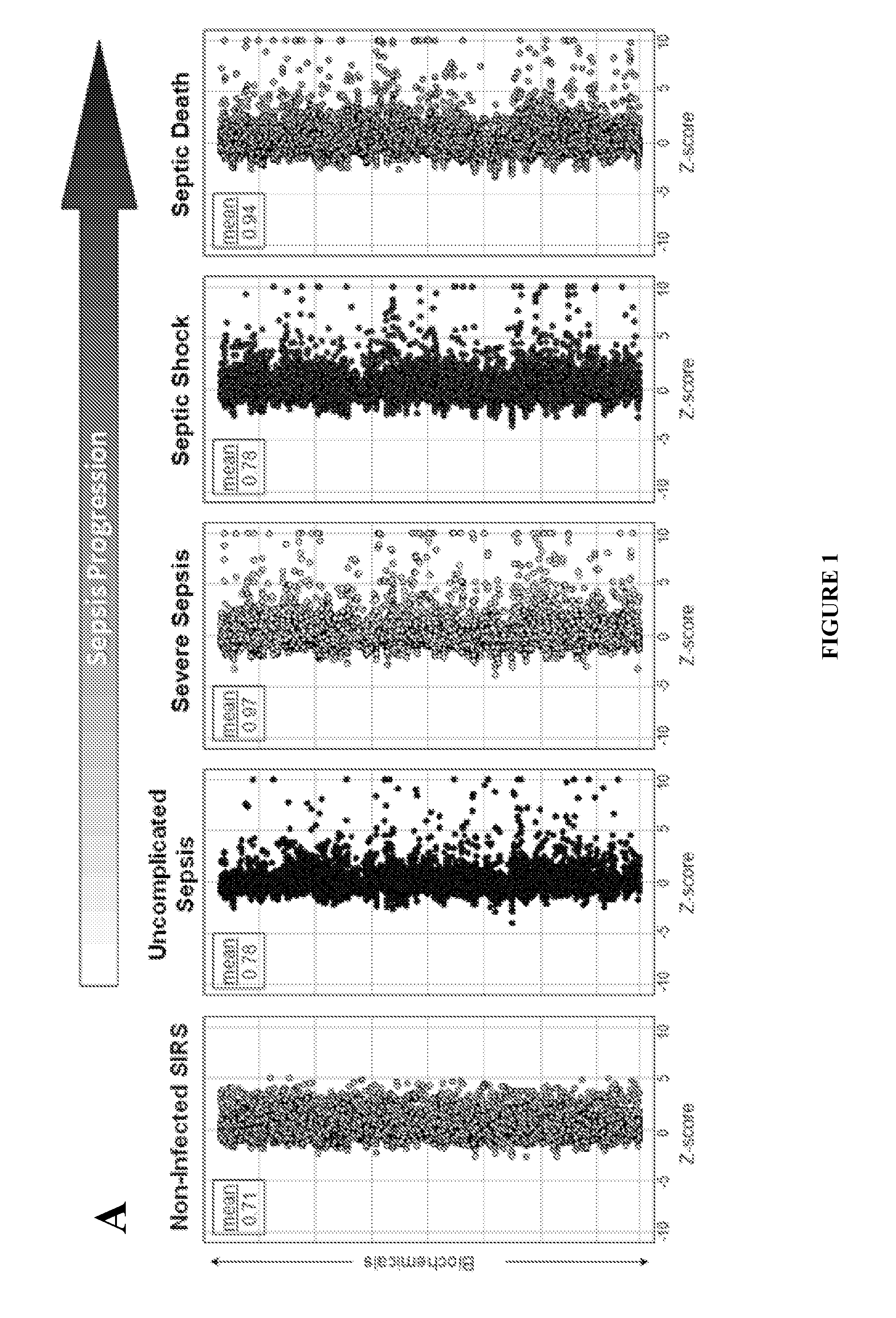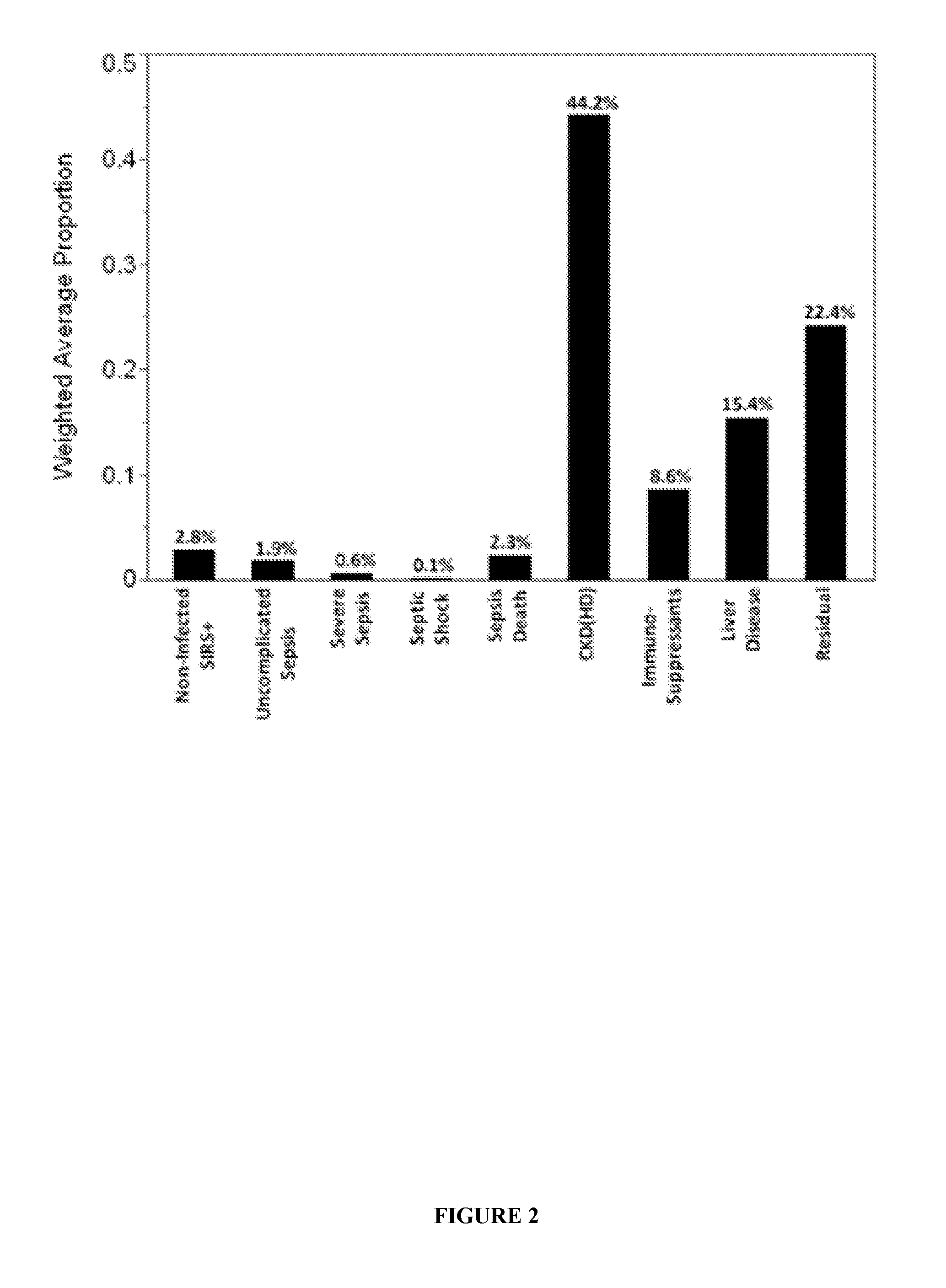Methods for Diagnosis of Sepsis and Risk of Death
- Summary
- Abstract
- Description
- Claims
- Application Information
AI Technical Summary
Benefits of technology
Problems solved by technology
Method used
Image
Examples
example 1
Identification of Capsod Study Sites and Patients
[0089]Inclusion criteria were presentation at the emergency department with known or suspected acute infection and presence of at least two of the systemic inflammatory response syndrome (SIRS) criteria (Bone et al., 1992). Exclusion criteria were age less than six years, pregnancy, presence of an imminently terminal co-morbid condition, recent treatment with an antibiotic for a bacterial or fungal infection, Human immunodeficiency virus (HIV) infection with a last known CD4 count of 3, acute presence of a cerebral vascular event, active gastrointestinal hemorrhage, seizure episode, drug overdose, burn injury, trauma or participation in an ongoing clinical trial, as previously described (Glickman et al., 2010). Patients were enrolled from 2005 through 2009 in emergency departments at each institution and written, informed consent was obtained by all study participants or their legal designates.
TABLE 2CLINICAL EVALUATORS FOR SEVERE SEP...
example 2
Collection of Clinical Data
[0090]Patient demographics, exposure, symptoms, past medical history, results of physical examination, APACHE II score, SOFA score, DIC score, MELD score, development of ALI and ARDS and treatment were recorded at enrollment (t0) and at 24 hours (t24) by a nurse practitioner or physician using online electronic data capture (Prosanos, La Jolla, Calif.), as previously described (Glickman et al., 2010; Dellinger et al., 2008; Knaus et al., 1985; Vincent et al., 1996). Microbiologic evaluation was as indicated clinically together with urinary pneumococcal and legionella antigen tests. Finger-stick lactate values were obtained. Other laboratory, microbiology and radiographic tests were ordered by the treating physician according to standards of care. Following patient discharge or death, charts were reviewed and largest deviations of clinical and laboratory parameters from normal were recorded, together with occurrence of outcome measures, microbiologic result...
example 3
Collection of Plasma
[0091]Blood was collected in bar-coded EDTA-plasma tubes at enrollment (t0) and the following day (t24). The blood was incubated on ice until centrifuged (within 4 hours), the plasma was separated. Aliquots were stored at −80° C.
PUM
 Login to View More
Login to View More Abstract
Description
Claims
Application Information
 Login to View More
Login to View More - Generate Ideas
- Intellectual Property
- Life Sciences
- Materials
- Tech Scout
- Unparalleled Data Quality
- Higher Quality Content
- 60% Fewer Hallucinations
Browse by: Latest US Patents, China's latest patents, Technical Efficacy Thesaurus, Application Domain, Technology Topic, Popular Technical Reports.
© 2025 PatSnap. All rights reserved.Legal|Privacy policy|Modern Slavery Act Transparency Statement|Sitemap|About US| Contact US: help@patsnap.com



